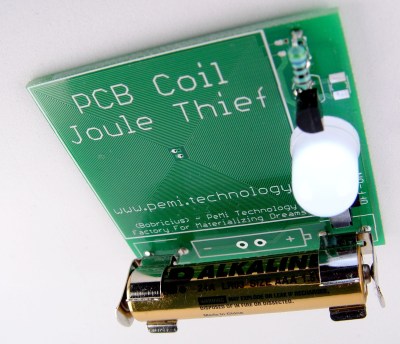The Academy Awards of hardware creation is going on right now! The Hackaday Prize is a challenge to you — yes, you — to create the next great piece of Open Hardware. It is simply incomparable to anything else, and we have the projects to show for it.
Last week, we wrapped up the Power Harvesting Challenge portion of The Hackaday Prize. Now we’re happy to announce twenty of those projects have been selected to move onto the final round and have been awarded a $1000 cash prize. Congratulations to the winners of the Power Harvesting Challenge portion of the Hackaday Prize. Here are the winners, in no particular order:
- Vampire Charger
- Portal Point Generator
- Brian Box
- High Efficiency MPPT Solar Charger
- PTPM Energy Scavenger
- Fluid Displacement Thermal Actuators
- Tiny Solar Energy Module
- Stomach Acid Powered Smart Pill
- Urea Electrical Power Harvesting Device
- mWessenger
- Body Heat Powered Flashlight
- Electron Bucket
- Ultra Low Power LiPo Charger
- Power Generation Modules
- PCB Coil Joule Thief
- Gutters To Gardens
- Mini Vertical Wind Generator
- imPulse
- Clock For A Century
- Phytoplankton Power
Interesting Takes on Power Harvesting
There are three things we will never escape: death, taxes, and an increase in the net amount of entropy in the universe. You can’t cheat death, and you can’t run away from the tax man, but these devices — these Power Harvesting devices — allow us to decrease the entropy in a small area. They preserve order in the Universe. These projects are the only thing stopping us from falling into an existential depression. They’re that good.
Let’s take a look at some of these projects.

If you want to harvest random energy fluctuations in your house, where would you start? You might think about putting a solar panel next to a window, or a windmill on your roof, but you’d be wrong. Your microwave is a leaky faraday cage filled with angry photons. You can harvest that power, and that’s just what [Jurist] did with his project, the mWessenger.
The mWessenger is a tiny board designed to mount to the front door of a microwave. There’s a small antenna on board that will harvest the microwave photons that make it out of the faraday cage, and a boost circuit to turn these photons into usable power. What’s the use of a device like this? There’s plenty! [Jurist] has the idea of creating an Internet of Microwave Notifiers, powered by leaking microwave radiation, that will tell you when your popcorn is done. Of course, you could always put the mWessenger next to your WiFi router and get a notification when the network goes down.
 But maybe you don’t want to harvest energy from a microwave. Maybe you’d like to capture some of that entropy you produce? Check out [Javier Betancor]’s imPulse, a device meant to harvest power while you’re riding a bike.
But maybe you don’t want to harvest energy from a microwave. Maybe you’d like to capture some of that entropy you produce? Check out [Javier Betancor]’s imPulse, a device meant to harvest power while you’re riding a bike.
The usual experience of harvesting power from a bicycle while it’s moving is a tiny little generator pressed up against the wheel, ostensibly to power a bike light. These are terrible, and not just because they don’t work well — if you want to do anything with modern electronics like run an LED strip or charge a smartphone, you’re going to need some power handling circuitry.
That’s where [Javier]’s project comes in. He’s using off-the-shelf brushless motors and a chain to tap power directly from the rear wheel. Think of it as a small-scale regenerative braking system, all tied up into an awesome project. The motors [Javier] is using can easily generate a few dozen Watts of power, making this more than enough for running some high-efficiency lighting or charging some electronics.
 There are too many ways of eking out the most power from a battery, but our favorite has to be the Joule Thief. This is a simple circuit made out of a transistor and a big ‘ol inductor that will run a battery dead flat. If you attach an LED to the circuit, it’s a fantastic way to keep using those ‘dead’ batteries for months and months.
There are too many ways of eking out the most power from a battery, but our favorite has to be the Joule Thief. This is a simple circuit made out of a transistor and a big ‘ol inductor that will run a battery dead flat. If you attach an LED to the circuit, it’s a fantastic way to keep using those ‘dead’ batteries for months and months.
[bobricius] has been working with PCB coils for a while, and if there’s one thing about PCB coils, it’s that they make very large, very inefficient inductors for your circuit. They’re also a ton of fun to design. That’s what led [bobricius] to create the PCB Joule Theif. It’s huge, it’s impractical, but it is a fantastic educational tool. Here, rendered in copper traces and fiberglass substrate is an inductor and an entire circuit there for inspection. It’s awesome.
This is Your Chance to Enter the Hackaday Prize
These twenty entries in the Power Harvesting Challenge have already won $1000, and they’re on the way to the final round of The Hackaday Prize where they’ll be in the running for the Grand Prize of $50,000.
The Hackaday Prize isn’t over, though, and right now we’re in the middle of the Human-Computer Interface Challenge. We’re looking for astonishing and innovative devices that serve as an interface for humans to talk to machines or machines to talk to humans. This challenge runs until August 27th, and twenty entries from this challenge will each win $1,000 and a shot at the grand prize. There’s still time to win your place among the hardware greats, so start your Hackaday Prize entry now.



















Ouch, My P Cell Feelings are hurt
I’m not entering this year, but I do agree that crumby batteries aren’t power harvesting, they’re just crumby batteries. Mechanicus was unnecessarily rude about it, but there do seem to have been some odd choices of winners made. Maybe other entrants were even worse, and they had to have 20.
Testosterone should be called the Personality Hormone, because it certainly makes a *personality* out of some people.
That wouldn’t even be a new interface, just look at the comments.
Now, if you made one that was interactive in realtime, that would be popular.
As for the power, if you used pennies and zink in a giant stack and figured out an old sulfur coating recipe, and used 80%+ recycled materials, then you’d have a solid shot. How long does cardboard dipped in lemon juice last, anyways? Are cotton makeup removal pads better? What if they’re recycled? Real research!
My interface entry is going to be a two factor pointer input; you control the joystick with your navel, and an eye-tracking AI makes sure you stare at it the whole time.
@Mechanicus , so is this your urine based project ?
https://hackaday.io/project/10560-urine-fuel-cell-sans-titaniumplatinum
Probably not. He seems to be much more piss-ed off.
This time around, I held off on submitting my TrillSat project into the Human-Computer Interface Challenge until I first saw the winners (or lack thereof) of this 3rd challenge. To my dismay, my capstan-winchbot catenary solar-tracker/self-elevating radio platform didn’t win a single award in any of the three 2018 Hackaday Prize Build Hope challenges so far, not even a non-monetary achievement–zero, zilch. Heck, even if my project in the Power Harvesting competition was chosen at random, I’d have around a 1 in 5 chance of winning, but I was not so lucky. I have therefore decided not to enter my THUMP (Tethered Haptics Using Morse Pulses) subsystem into the 4th challenge, as I no longer consider this year’s judges (as a collective voting group, at least) competent and don’t expect things to change before the next challenge. Many very good projects, besides mine, are also being ignored, and I feel for you. There are probably some good judges whose voices are being overridden, but we’ll probably never know. I left more details of the reasoning for my decision in my last log entry at https://hackaday.io/project/120889-trillsat/log/149991-build-hope
Would you like some constructive criticism on your project’s presentation? (Rhetorical question: here it is anyway.)
It may be that you have a few neat ideas in there, but it’s presented as a satellite (it’s a terrestrial solar robot on a rope) and is still in a very early stage of development (read: random wiring + hot glue) that makes it very hard for judges to assess whether or not any of it makes any sense.
In short, you might have an incredibly involved, mulit-faceted project, but there’s just so much going on that it’s hard for judges to tell what works and what doesn’t.
Because the project does so many things, it’s also a bad fit for any of the individual challenge phases, even if it includes aspects of some of them in the design. For instance, I love the idea of tapping on the string to communicate with the device — that’s clever and original. If you documented and cleanly implemented just that one aspect, it would have been a great entry in the HCI round. Ditto the basic premise of balancing around on a string to get a good angle on the sun for the solar panels, but for energy harvesting.
My advice would be to focus down on one interesting sub-part, get it right, and document it well. Then repeat for any remaining subsystems. You might have 10 interesting projects here, or you might have 10 pipe dreams. As it stands, it’s very hard for an outsider to tell.
“random wiring + hot glue”
The wiring isn’t random, it’s dead-bug, remember?
https://hackaday.com/2016/05/04/getting-ugly-dead-bugs-and-going-to-manhattan/
The Open Source Underwater Distributed Sensor Network (wiring covered with epoxy) and ColorChord (wiring connected to brass brads through cardboard) are beautiful recent examples which also use dead-bug.
TrillSat isn’t just a “terrestrial solar robot on a rope” as you characterized it. You neglected to mention its multiuser 2m AX.25 and PBBS server with XMPP gateway, which is the whole purpose of the platform and what turns it into a communication satellite analog.
Batteries aren’t harvesting energy unless you are recycling scrap metals that would have otherwise be rotting away.
As for batteries, there is another one that runs on stomach acid. That one is a copy/paste of a paper on the exact same topic that it is based on and there is a patent on the process. Having a patent on the project idea makes it less open as you are now restricted on what you could do with it.
I agree with most of the points raised here. There have been a total lack of transparency of these contest since the beginning. There are absolutely no feedback on the score of projects or how they rank against each other.
There are some nice projects, but I would have liked to see more novel stuff. Not only windturbines, random IOT project with solar cell, copper-zinc batteries and bycycle alternators. There are some nice projects out there. Out of my personal list with the Top10 most innovative ideas only one made it into the finals (no particular order):
https://hackaday.io/project/158857-body-heat-powered-flashlight
https://hackaday.io/project/159350-harvester-building-the-energy-forest
https://hackaday.io/project/159749-piezoelectric-energy
https://hackaday.io/project/159485-sebs-seebeck-effect-buoy-system
https://hackaday.io/project/159049-portable-kite-power
https://hackaday.io/project/159242-tidal-wave-energy-conversion
https://hackaday.io/project/107767-high-powered-thermoelectric-generator-teg
https://hackaday.io/project/158989-geothermal-energy-harvesting-garden-lights
https://hackaday.io/project/159747-hybrid-thermoelectric-solar-cell
https://hackaday.io/project/159040-power-harvesting-with-triboelectric-generator
I think all of these ideas would have deserved to come into the finals.
Are you giving any prizes? ;)
No, unfortunately not ;) But perhaps Hackaday is doing a second power harvesting challenge after so many people are not satisfied with the outcome of the first one, how about that?
No ….. Better to learn the lessons and move on. No competition is going to be 100% fair ….. 90% maximum I’d guess. There will always be a significant amount of luck involved. Or unluck,
what about this one , its a lot like the seebeck buoy project.
https://hackaday.io/project/159239-lily-power-pods-teg-concentrated-solar
I didn’t judge in this round, so take my comments with a grain of salt.
I clicked through a few of the projects on your short list, and the ones that I did see fell in the “very nice start, but if you push this just a little bit further, you’re about to discover what the really difficult problem with the approach is, and that’s the part that we’d actually like to see being tackled.”
Restated, it’s very easy to find a source of energy, and it’s very easy to design a circuit that uses it. The steps in between, for the small amounts of energy that we’re dealing with in most cases here, is the really hard part.
Take even the most seemingly naive project: the Peltier/Seebeck flashlight. It’s just a peltier and an LED, right? Well, no. There’s some real design work there in making sure that the cold side stays cold enough for long enough to get some useful light out of the thing. Try it! See if you can do better.
When you’re working with incredibly low currents, everything matters. For instance, if you want to rectify a small AC power source, you might think diode rectifier. But then you’re looking at “normal” diodes with a 0.7 V threshold voltage, or Schottky dioes with 0.25 V. A clear winner, right? But most Schottkies also have a higher reverse leakage current — and that can be on the same order of magnitude as the current you’re trying to rectify. (Don’t ask me how I know!)
Turning small power sources into bigger / useful / stable sources efficiently is the name of the game. So projects that don’t either demonstrably do something (“useful”) or address the conversion and storage problems are at a serious disadvantage.
Power harvesting is the most technical of the challenges that we’re running this year, and that is reflected in the winners. They are a lot less greenfield, “what if”, or dream-big — instead they’re very practical, technical, and focused. More engineery than hacky, if you know what I mean.
Want to let your creative-tech side loose? Take the HCI challenge or store up your creative juices for the musical round. We tried to make a blend of challenge topics that would provide something for every kind of hacker out there.
I may not always agree with the judges, but I still very much enjoy competing in the HackadayPrize. So far I have not won this year, but my project last year (https://hackaday.io/project/25581-inspectorbot) was one of the 20 winners in Wheels, Wings and Walkers and Best Products. The exposure has gotten some outside attention, and soon there will be a newer improved InspectorBot 2 based on one of my projects this year (https://hackaday.io/project/115321-the-squid-open-robotics-control-module) and a Raspberry Pi W. So just because your project hasn’t won in a round doesn’t mean your project is not a winner. Thanks Elliot for the insight on what the judges are looking for, and everyone keep entering your projects, you may be the next big winner.
Thanks for the recognition!
Electrodes that don’t involve in redox reaction (especially graphite or activated charcoal) should be used too.
Most people don’t appreciate that HaD is a business which makes money proportional to web traffic. As such, they’re only going to do things that increase that traffic. They don’t generate the content, so they depend on others to do that… for free. The prize incentivizes that effort and in order to ‘win’ you’ll have to do as much content generation and traffic attraction as possible.
Also, it doesn’t matter if the regular HaD audience thinks your project is awesome. If it doesn’t attract linked traffic from other websites (e.g. “Charge your cell phone from dead AA’s” or “Researcher in frozen tundra 3D prints lifesaving wind generator”) then the judges are not going to push it.
Sure HaD writers will disagree, but just look at the history yourself. That’s life though. No need to get dramatic about it, just don’t enter unless you’re willing to play the game.
You’ll need to create high production videos with someone personable, plenty of graphics (<10min). Have beautiful documentation with plenty of pictures. Make sure it's something that brings in traffic, like a 3D printed cellphone app with robotic energy harvesting via IoT for handicap scientists suffering from PTSD or gender confusion.
Oh ya, IT MUST BE OPEN SOURCE because you're the devil if ANY part is not.
Did the judges see my project ….???? link:-https://hackaday.io/project/158622-smart-shoes